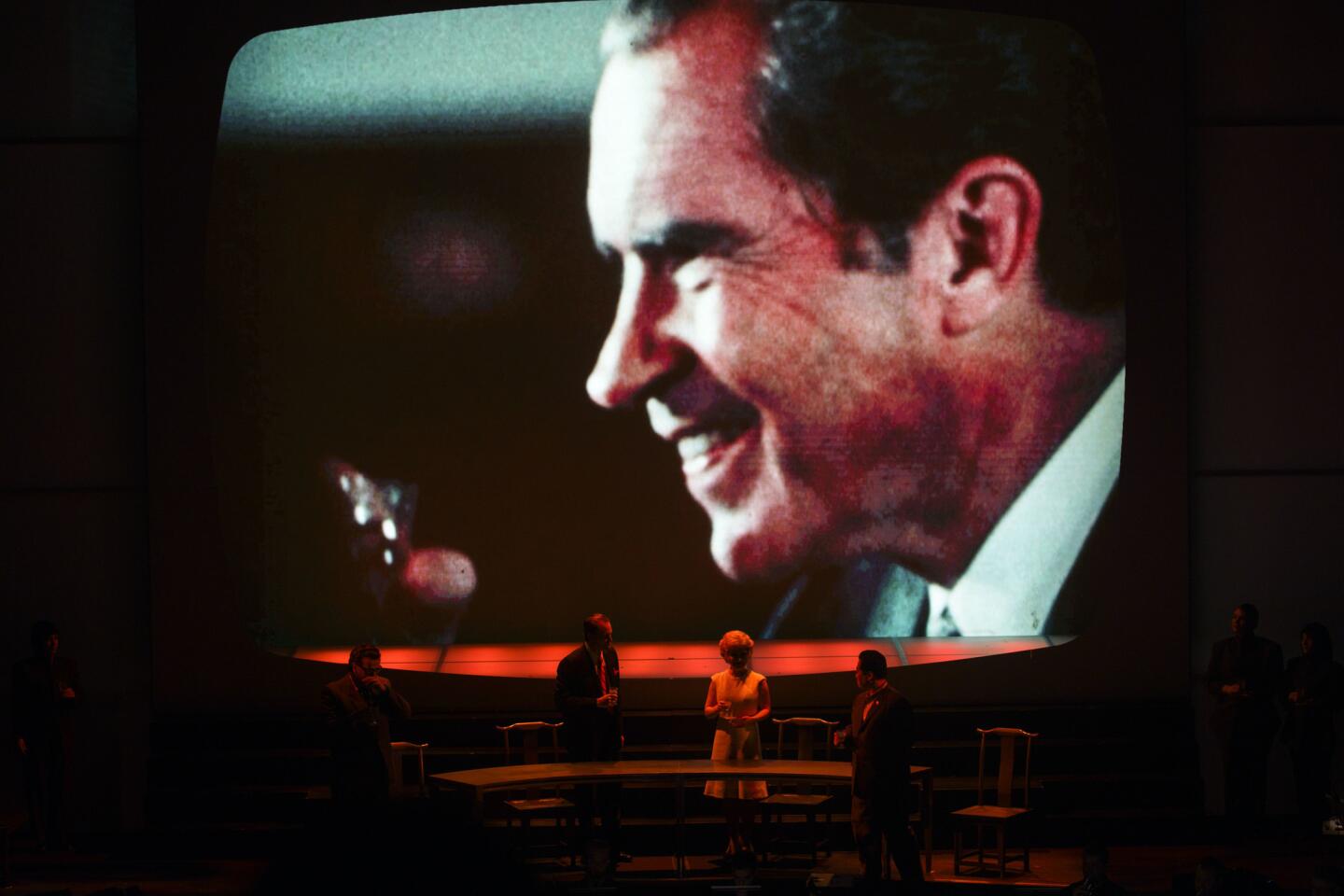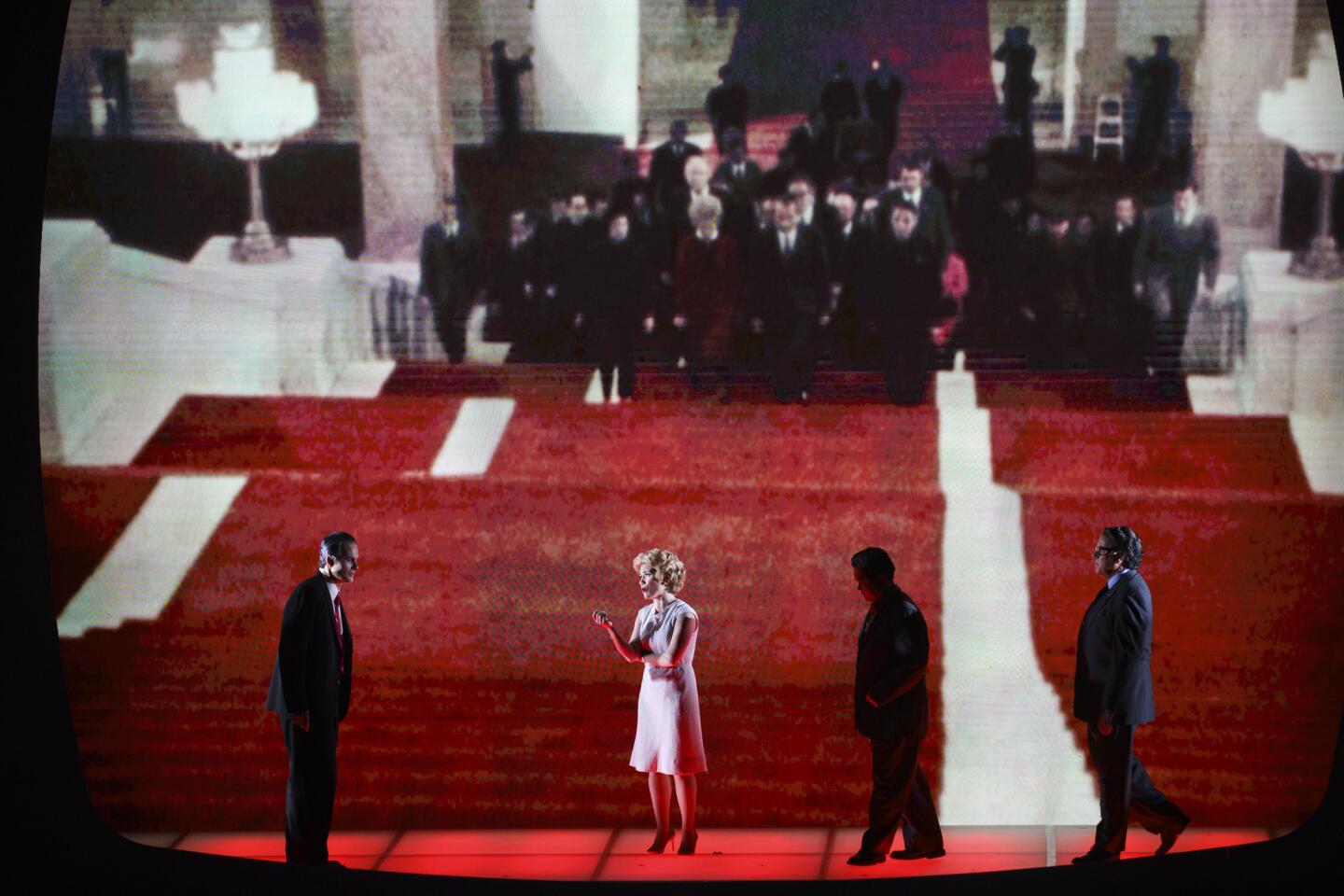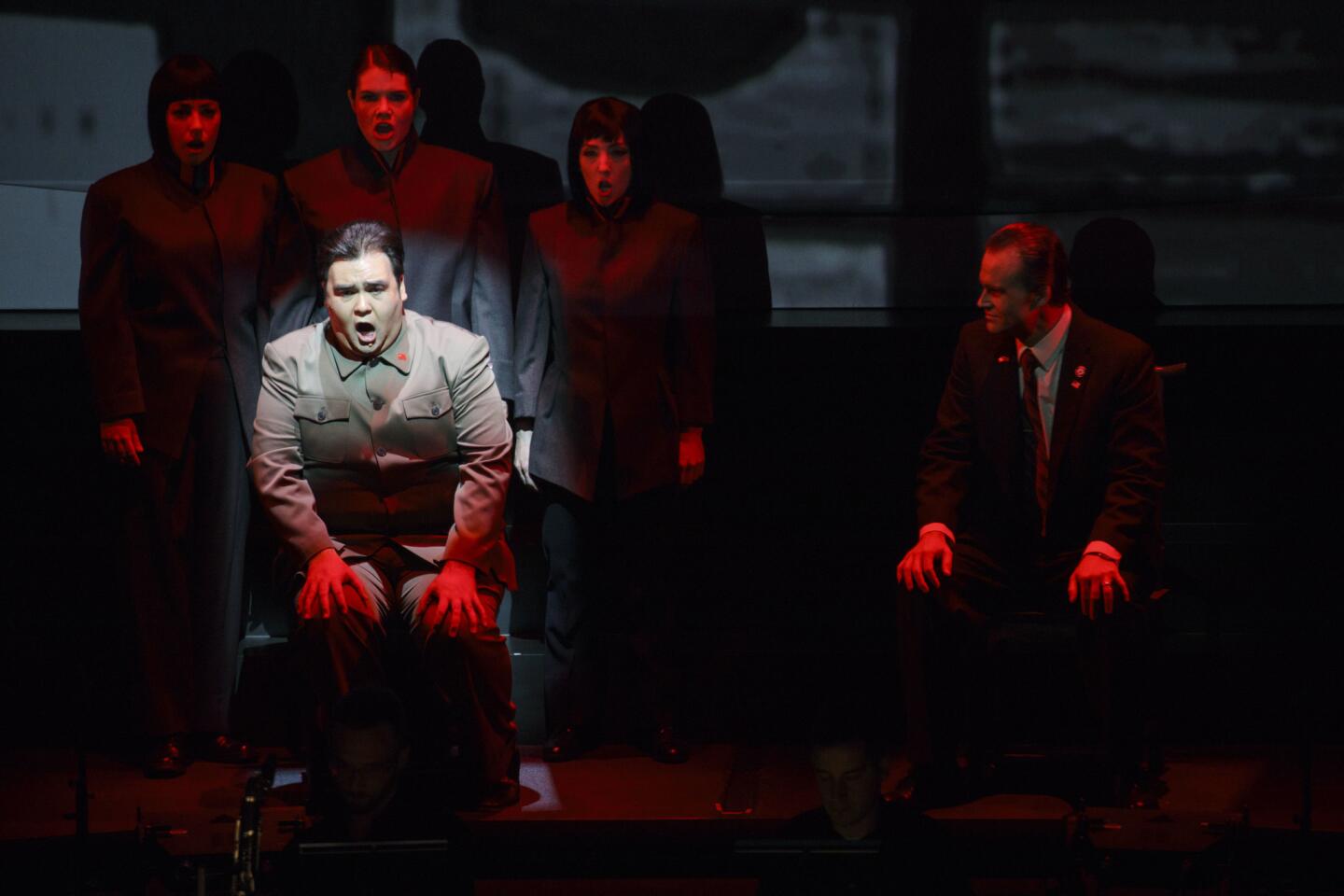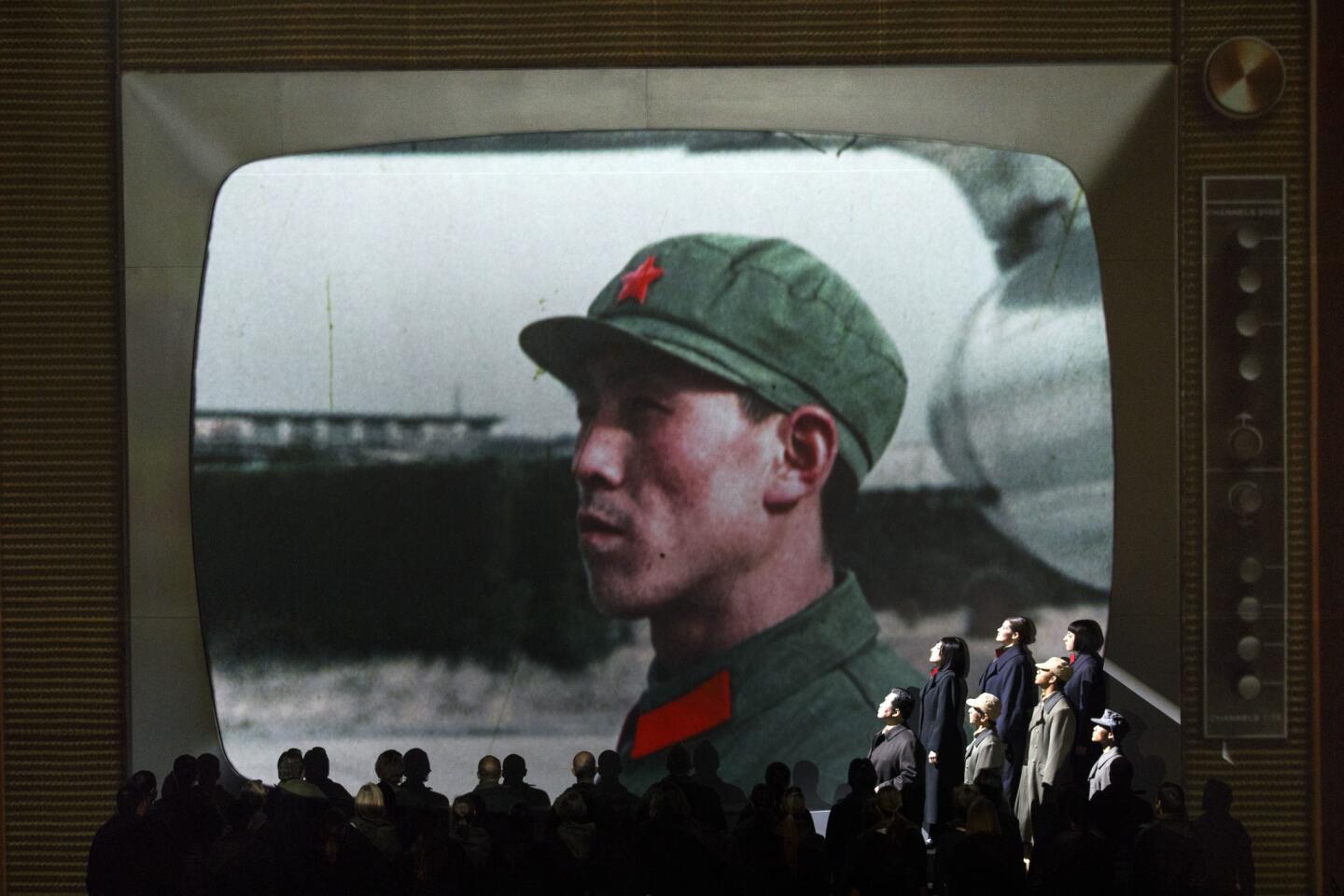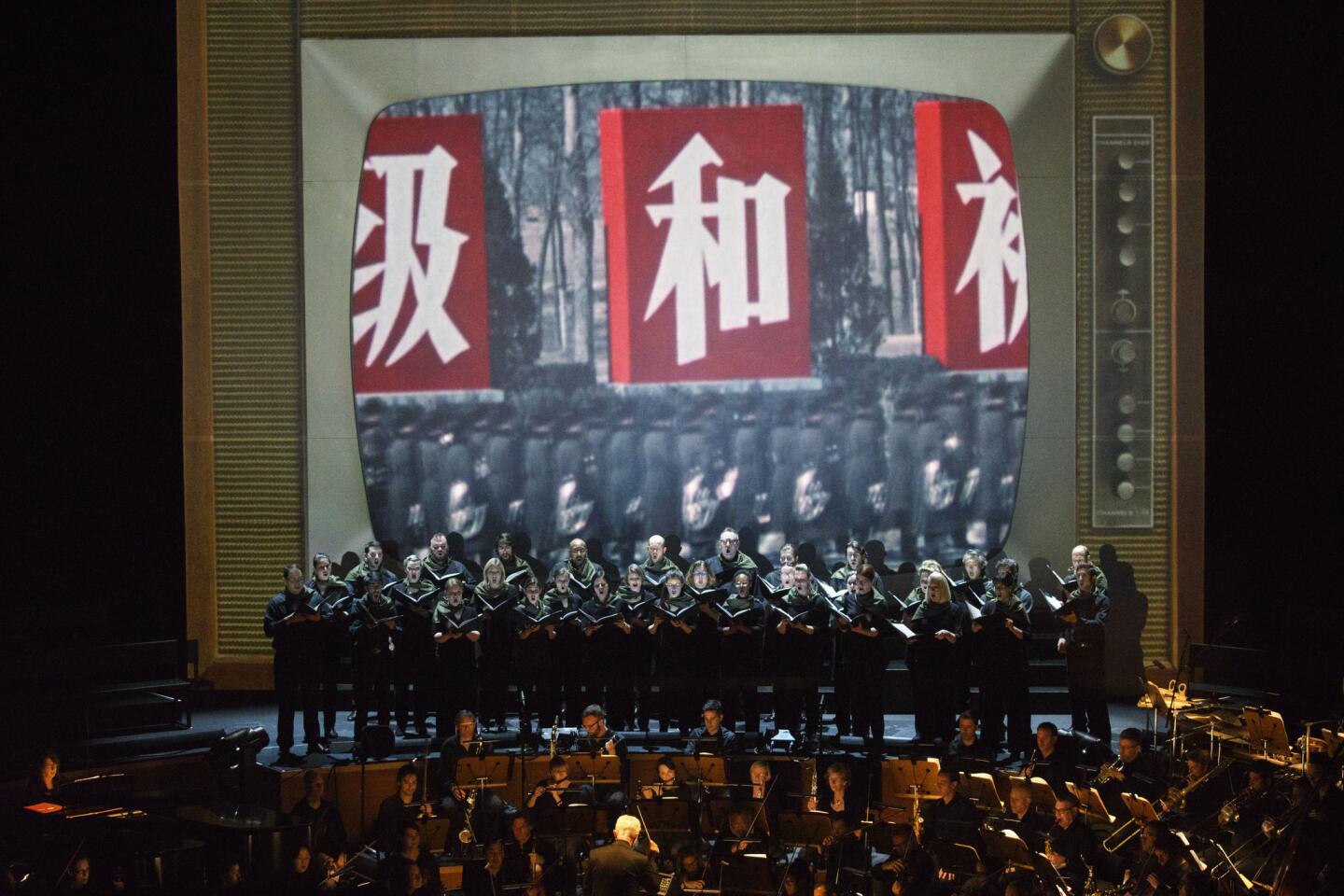L.A. Phil delivers a dazzling reimagining of ‘Nixon in China’
Very few works can claim to have launched a trend, but John Adams’ “Nixon in China” certainly can. A wag called it “CNN Headline Opera,” a somewhat pejorative tag that didn’t stick. But the concept — basing theater pieces on recent news events and personalities — did take hold, and a whole trail of operas, quasi-operas, monodramas, song cycles and such have followed since the “Nixon” debut at Houston Grand Opera 30 years ago.
“Nixon” took hold, too — much to the composer’s surprise, establishing itself in the general operatic repertoire. It has not been easy for some — myself included — who lived and sweated through the Richard Nixon years to fully come to terms with this opera’s myth-making mix of facts and fantasies about that period. And when aggrandizing accolades start flying — the
But after hearing Adams, now 70, lead the L.A. Phil in a musically and visually dazzling reimagining of the piece Friday night in
Stage director Elkhanah Pulitzer, allied with film designer Bill Morrison and scenic and projection designer Alexander V. Nichols, rummaged through the archives in search of film of the 1972 Nixon visit to China. She found some 22 transferred reels of super 8mm home movies (Nixon’s chief of staff H.R. Haldeman and deputy assistant Dwight Chapin shot a lot of amateur film) and used them as scenery for this semi-staged production.
The films were shown on a scrim, upon which the projected frame of a 1960s television set was superimposed. The vintage TV screen confronted the audience entering Disney Hall with footage of crowds surrounding the White House awaiting the departure of the Nixons for China.
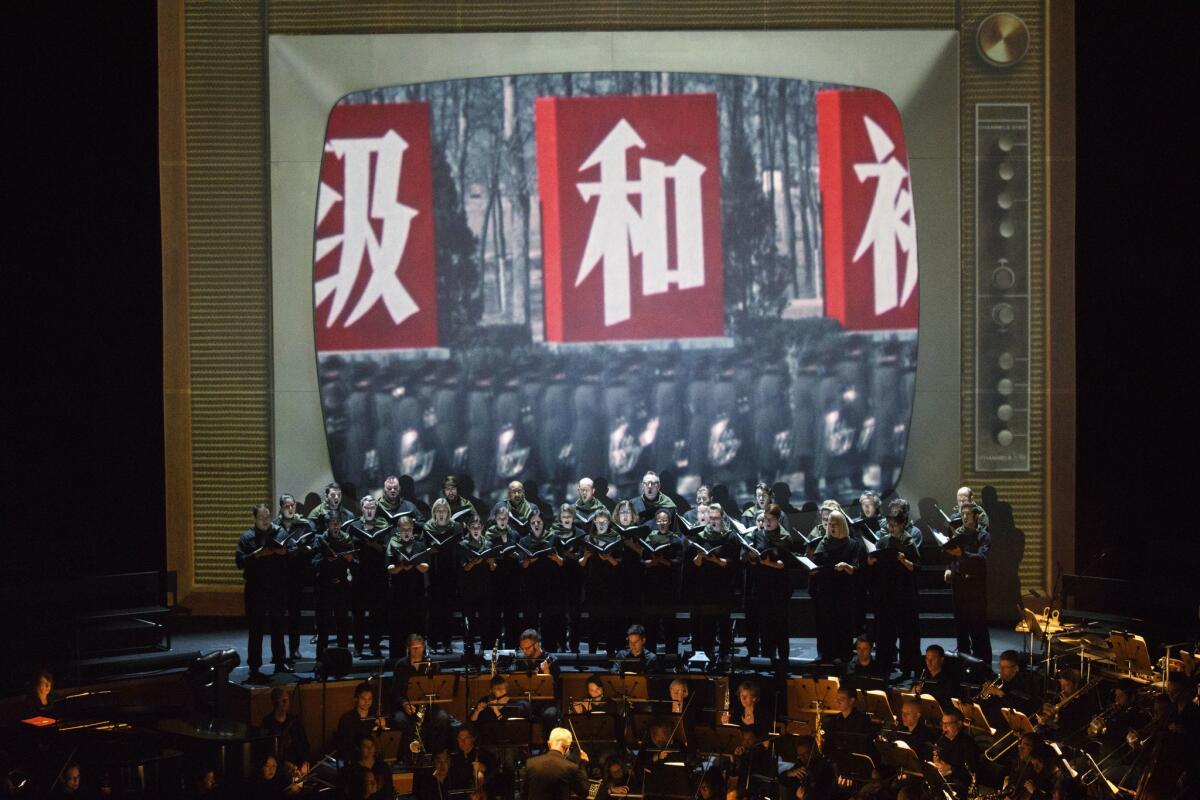
Ultimately, the most astonishing thing was how well the films were integrated with Alice Goodman’s libretto, Adams’ music and, to my amazement, the live cast members themselves. In the pre-concert talk, the ever-irreverent Adams described the crescendo leading to the emergence of the Nixon plane in Act I as an “enormous sugar high.” But the actual home movie taken from inside the Spirit of ’76 as it descends onto the Chinese landscape gave the music even more punch than did Peter Sellars’ startling original staging. For Pat Nixon’s tour in Act II, when the libretto mentioned a pig farm, an elephant or Chinese schoolchildren, found film for each appeared on screen, and that made soprano Joélle Harvey’s soliloquies as Pat more heartfelt.
Placing the singers on the semicircular platform in back of the orchestra or behind the scrim gave most of the audience enough distance so that when we saw Pat Nixon in her red coat on the big screen, Harvey looked like her double. As Nixon, bass-baritone Ryan McKinny must have studied old films to replicate so effectively the hunched-over Nixonian posture, and when Nixon’s notorious “News” aria came to the paranoid line “the rats begin to chew the sheets,” the lighting suddenly went in shadow, alluding to his dark side.
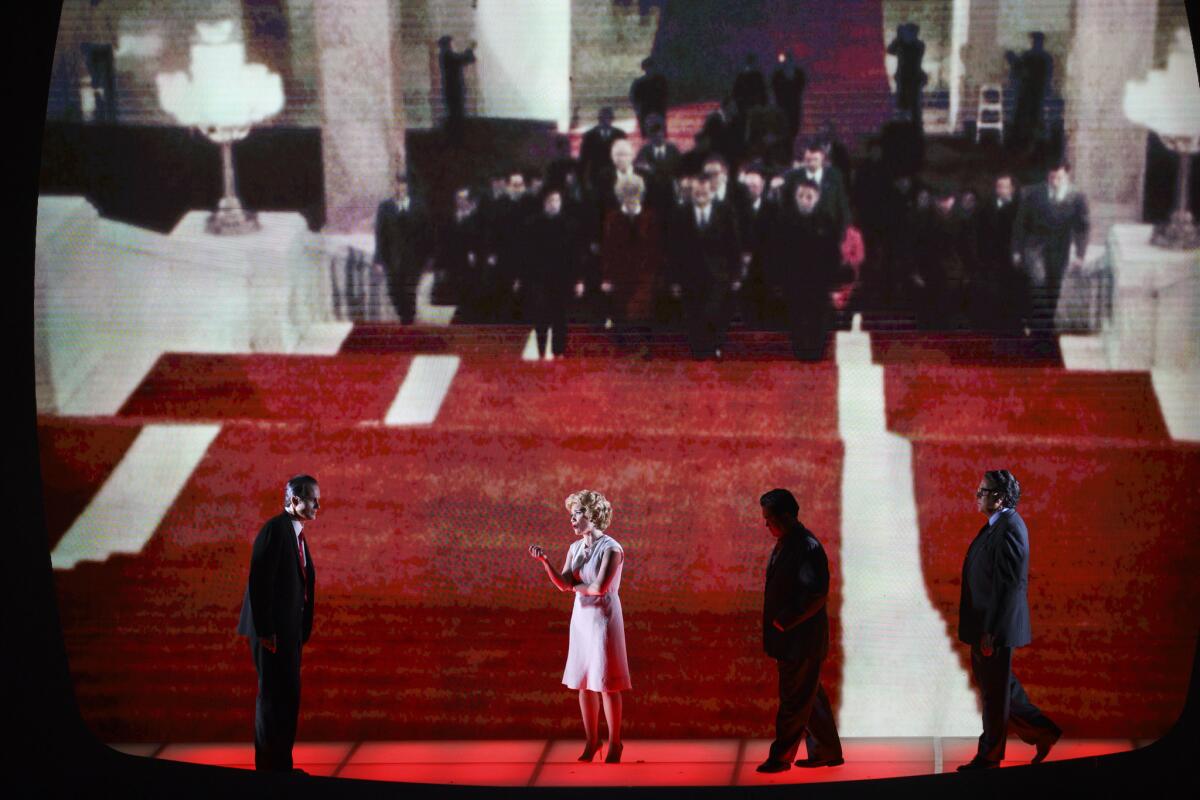
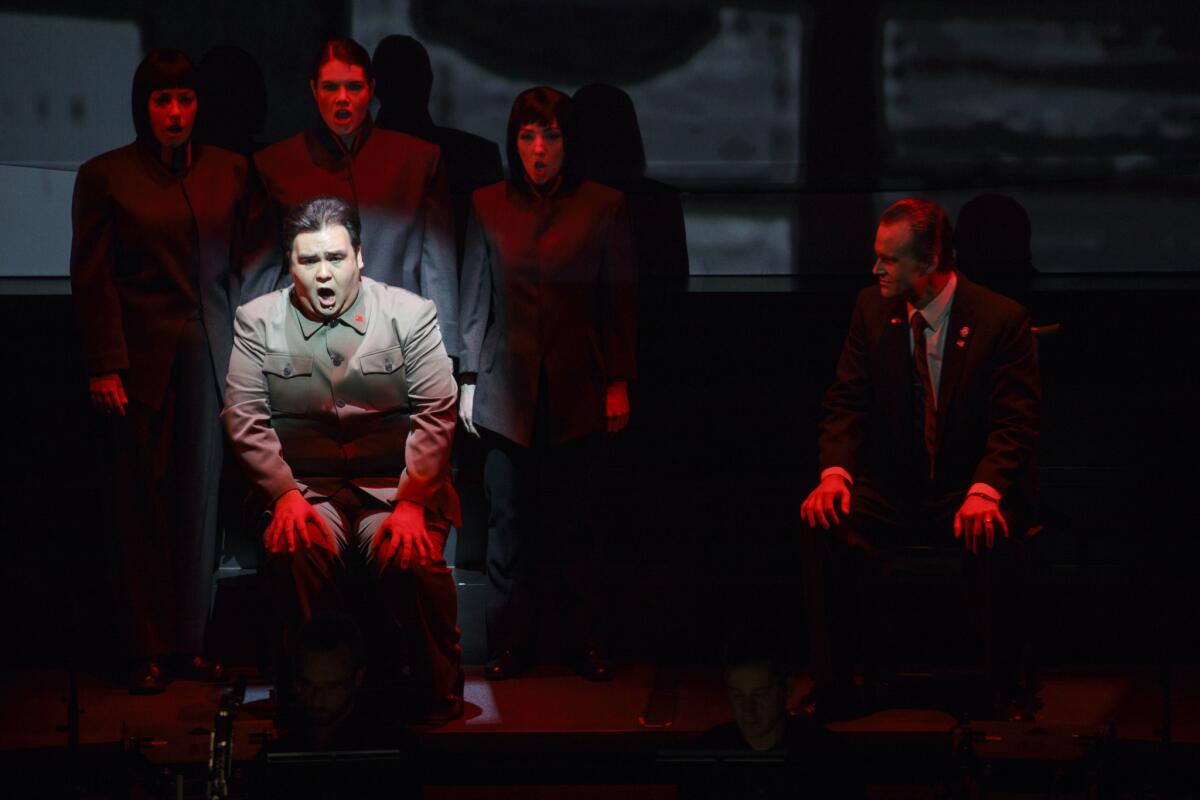
SIGN UP for the free Essential Arts & Culture newsletter »
In profile, baritone Peter Coleman-Wright looked uncannily like the real Henry Kissinger, seeming less of a sinister presence than has been the case in previous productions. Tenor John Matthew Myers’ Mao Tse-tung was brightly lighted to match his declaiming voice, while the penetrating coloratura soprano Kathleen Kim (Madame Mao) convincingly switched from hard-line ideologue in Act II to the seductress of memory in Act III. Baritone Joo Won Kang made hushed, delicate work of Premiere Zhou Enlai’s moody closing aria.
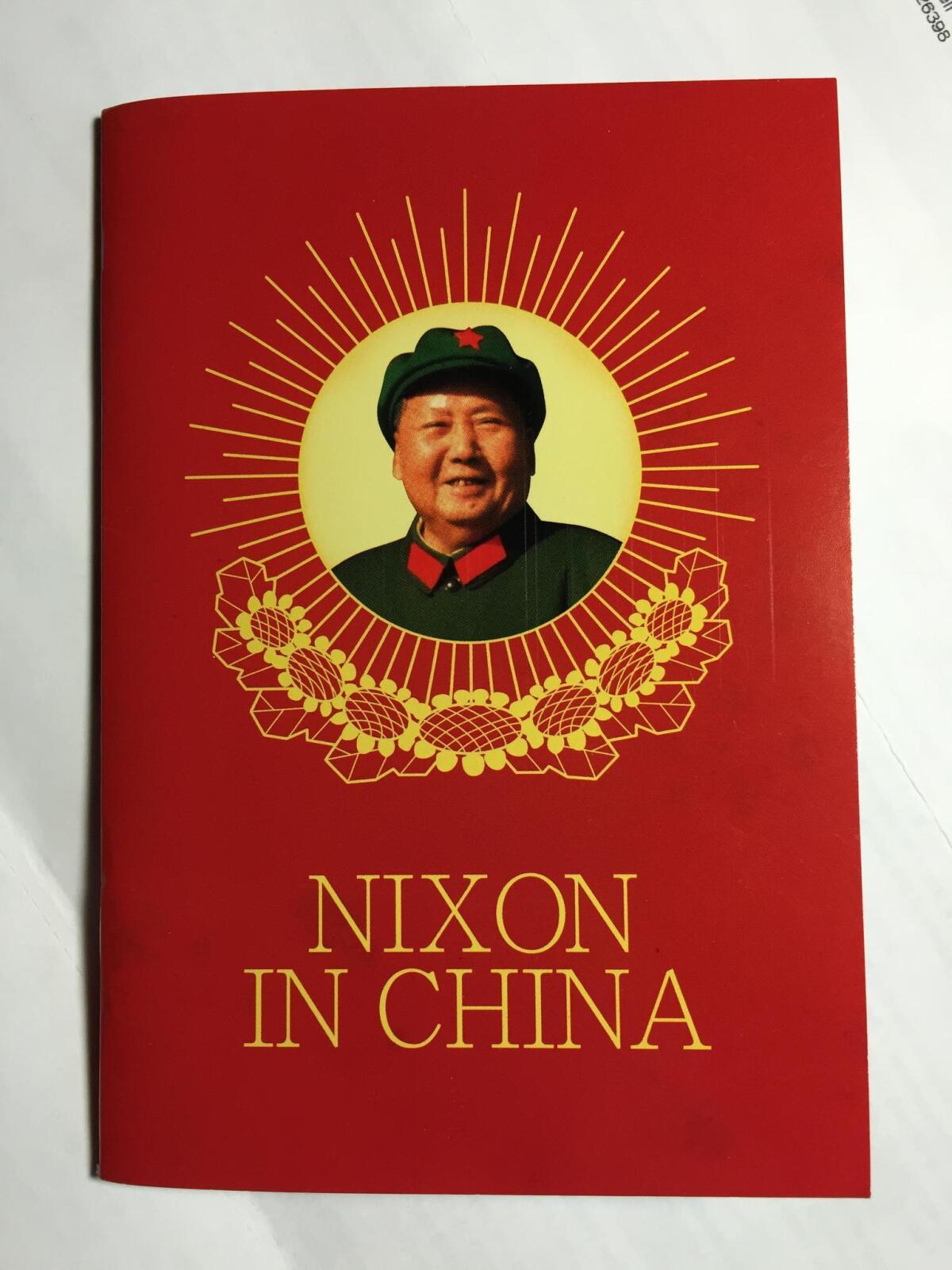
Liberated from the opera pit and handled by a first-class orchestra, Adams’ score has never sounded as clear, nor as attractive. I would credit Adams’ increased experience and rapport with the L.A. Phil, as well as his enormous growth as an opera composer since “Nixon,” for revealing many unexpected shadings and complexities, and making the Richard Strauss/Wagner parody in Act II blossom voluptuously. The Los Angeles Master Chorale sang with its habitually keen diction; choreographer Leslie Stevens placed the garishly red-lighted depiction of “The Red Detachment of Women” ballet within the TV screen along with period film of the dancers.
The more this production reflected real history, the better it went down. And kudos for whoever had the idea of designing miniature souvenir programs that imitated Mao’s “little red book.” Nice touch.
♦ ♦ ♦ ♦ ♦ ♦ ♦ ♦ ♦ ♦
L.A. Phil’s ‘Nixon in China’
Where: Walt Disney Concert Hall, 111 S. Grand Ave., L.A.
When: 2 p.m. Sunday
Tickets: $53-$183 (extremely limited availability, prices subject to change)
Running time: 2 hours, 45 minutes (with one intermission)
Follow The Times’ arts team @culturemonster.
ALSO
Times art critic Christopher Knight’s latest reviews
Times theater critic Charles McNulty’s latest reviews
Times architecture critic Christopher Hawthorne’s latest columns
The biggest entertainment stories
Get our big stories about Hollywood, film, television, music, arts, culture and more right in your inbox as soon as they publish.
You may occasionally receive promotional content from the Los Angeles Times.
